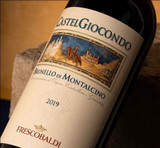Aug 29th 2025
What Makes a Wine Age-Worthy? 6 Traits to Look For
A great bottle is something to remember and can stay imprinted in the mind for 10 or 20 years, in case it is produced to last. By the best wines for aging, we mean wines that become more flavorful, fragrant, and smooth in the process of aging. Not all bottles should be aged to get better. There are wines that are to be drunk when fresh and young, and there are those that become nothing short of spectacular once they have been matured in storage.
Here at the Woodland Hills Wine Company (WHWC), we have spent decades selecting wines that appreciate maturity. We have observed bottles evolve magnificently over the years, and six main characteristics make a wine age-worthy.
Why Age Wine at All?
Aging wine does not only mean waiting; it also means watching the change that happens in the wine. With age, tannins soften, aromas deepen, and flavors knit together into something extraordinary. Wines, which are rare, become more difficult to find as time goes by, which makes them more valuable and exclusive.
We have collaborated with producers worldwide to select wines to mature in bottles that are destined to be at their best many years after bottling. If you have ever wondered what makes some of the bottles cellar-worthy wines, then it is because they are structured to age better as opposed to declining.

Trait #1: High Acidity: The Wine’s Lifeline
It is acidity that makes a wine alive and fresh even after many decades. Naturally high-acidity wines are less likely to oxidize, i.e., retain their shape and brightness. Mosel Rieslings, vintage Champagne, and cool-climate Chardonnays tend to be very high on this. Depending on style, high-acid wines can age magnificently over a 10-20 year range or longer.
When you are asking how long it takes to age wine with high amounts of acid, consider at least 5 to 15 years of aging in the case of white wines and up to 20 years of aging in the case of sparkling wines. Even the best flavors will be boring to the palate without acidity.
Trait #2: Firm Tannins: The Structural Backbone
Tannins are organic elements present in grape skins, grape seeds, and oak barrels. They provide the red wines with spice and tannins when young; however, as they mature, they smooth out to a silkier texture.
Barolo, Bordeaux, and Napa Valley Cabernet Sauvignon are well-known to be tannic and strong, a sign that these wines are to be aged. Firm tannins mature in over 10-30 years to bring fruit, acid, and alcohol into harmony. When you adore strong reds now, think of how forthright they will be with age.
Trait #3: Balanced Alcohol & Sugar: Harmony for Longevity
Wines high in alcohol or sugar can age poorly if acidity or tannins are lacking. But when balanced, they can thrive for decades.
Take a great example such as fortified wines: Vintage Port is delicious in its combination of sweetness, tannin, and alcoholic stability, and thus, it can age beautifully for 30, 40, or even 50 years. Seek balance, not extremes, when tasting wine; that is what will help you figure out longevity.
Trait #4: Concentrated Fruit: Flavor Depth That Lasts
The wines that have heavy, rich fruit flavours have the power to develop with time. This will be found in great vintages of Burgundy, Rhone, and Tuscany, i.e., rich Pinot Noirs, intense Chateauneuf-du-Pape, or structured Brunello di Montalcino.
The wines have layers of flavor that unravel and then swing into savory, dried fruit, leather, or forest-floor flavors. The concentration of that depth of fruit means they remain fascinating in the glass decades later. These are without doubt some of the most ageable wines you will come across.
Trait #5: Proven Track Record: History as a Predictor
There are producers, regions, and vintages that produce age-worthy wines. Bordeaux First Growths, Grand Cru Burgundies, and Brunello di Montalcino in very good vintages always demonstrate extraordinary aging capability.
The history is on your side: looking back in history, a winery's vintage may have aged exceptionally well, and the present vintage will, most probably, be the same. One of the simplest methods of choosing wines to age is by relying on the established reputations.
Trait #6: Quality Storage Potential: Protecting the Investment
Even the most suitable wines that are good at aging will not survive under bad storage conditions. The temperature must be about 55°F and not exposed to light or vibration.
Correct cellaring keeps the fine balance within each bottle, making it age as desired. It does not matter whether you put money into a professional cellar or a special wine fridge; the safety of bottles is as crucial as the wine selection.
How Long to Age Different Wines
Aging wine is both an art and a science. The ideal time depends on the grape variety, region, and structure of the wine.
- Cabernet Sauvignon: 10–20 years
- Riesling: 5–15 years
- Pinot Noir: 5–12 years
- Champagne: 10–20 years
- Vintage Port: 30–50 years
The length of time to age wine varies upon the grape, region, and structure. Begin with instructions, but know that it is also fun to taste as you go.
WHWC Picks: Best Wines for Aging in 2025
Trying to get your cellar started? In our quest to find truly outstanding bottles that embody these six characteristics of age worthiness, we have identified a unique selection of bottles that have been chosen in our quest to find really exceptional bottles that are age worthy, and have a complexity of flavor as well as long-term potential.
Delamotte Brut Blanc de Blancs Champagne 2018: This is a minerally, racy Champagne with citrus zest and brioche flavours, which will turn creamier in twenty years.
Conti Costanti Brunello di Montalcino 2020: A well-structured wine with concentrated cherry and plum and savory herbs, which are destined to age for 20+ years.
Mouton Rothschild Pauillac 2020: This will be dense, cassis, graphite, and exotic spice with fine-grained tannins promising decades of finesse.
Cantemerle Haut-Médoc 2020: A standard form of Left Bank mix, dark fruit, cedar, and strong tannins, an excellent wine to age.
Melville Pinot Noir Sta. Rita Hills Estate 2023: Bright acidity of juicy red fruit and savory spice, accessible and ready to develop in the medium term.
Quinta do Noval Vintage Port 2022: Dark blackberry, cocoa, and sweet spice, which will mature and change over the space of 50 years.
FAQs
- What constitutes an age-worthy wine?
Structure, acidity, balance, and a track record of aging.
- How many years should wine age before I drink it?
It depends on the style, 5 to 50 years.
- Are white wines good aged?
Yes, particularly wines of high acidity such as Riesling and white Burgundy.
- Which wines should I buy to age cheaply?
Second label Bordeaux, good Barolo, and the best German Rieslings.
- What should I do to age wine?
Store bottles in a cold, dark, humid, and vibration-free place.
Old is Gold!

The aging of wine is a flavor, texture, and experience investment in flavor. There are six characteristics that should be remembered when selecting bottles, including acidity, tannin, balance, fruit concentration, proven history, and proper storage. We at WHWC love to guide our collectors and enthusiasts in finding cellar-worthy wines.
Browse our collection of the best wines for aging and start your cellar today!







